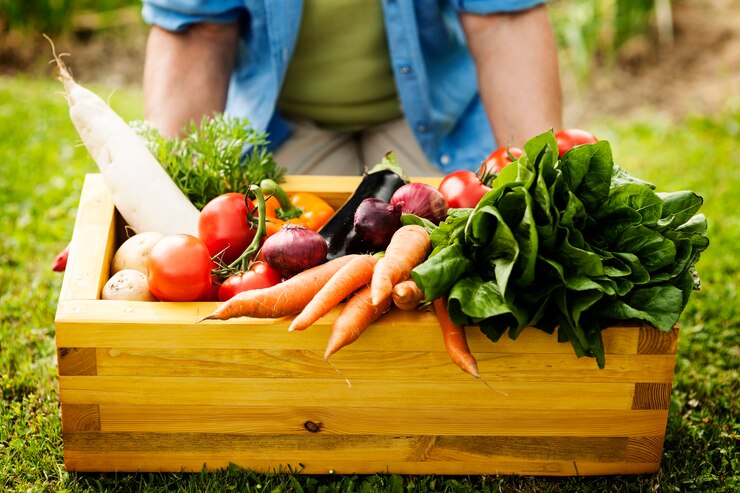Thank you for visiting “Growing Gold: How Crop Rotation Transforms Soil into a Fertile Haven for Crops.” This investigation reveals the art and science of crop rotation. This technique goes beyond simple farming to compose a symphony of soil enrichment in the constantly changing field of agriculture. As we embark on this trip, see your fields as a dynamic ecosystem rather than merely a surface for growth, where the deliberate dance of crops turns regular soil into a nutrient-rich sanctuary.
Crop rotation is a sustainable commitment to the future of agriculture, not just a farming method. Each chapter shows the alchemical process that transforms the soil into a rich haven for crops, from solving the riddles of soil health optimisation to erecting defences against crop enemies. Come along on this journey with us as we plant the seeds of understanding, improve soil health, strengthen against problems facing agriculture, increase harvests in a harmonious symphony, and provide a sustainable legacy that extends beyond the fields. Greetings from the fascinating realm of Growing Gold.

-
Planting the Seeds of Knowledge: Crop Rotation Explained
To begin our journey through agriculture, let us explain the intriguing crop rotation process. Imagine it as a meticulously staged ballet in which various crops alternately take the lead. This dance is a rhythm that improves soil health and prepares the ground for an exceptional crop yield; it is not just a show.
Crop rotation is a strategic agricultural approach in which various crops are planted in a given region throughout successive seasons. The objective? is to reduce pests and illnesses, increase soil fertility, and eventually improve the general health of our farming ecosystem.
Have you ever noticed how much better your mood can be with a change of scenery? That also applies to our crops. Crop rotation is a way to relieve the soil of the same nutrient needs while allowing for the growth of various plants. Consider it a vital trip for the soil that keeps it healthy and prevents nutrient fatigue.
-
Nutrient Nirvana: Increasing Soil Health by Changing Crops
Let’s now take a closer look at the soil, literally! Nutrients in our soil act as vital resources for our crops, which live there like a thriving metropolis. Crop rotation ensures that these resources are dispersed sustainably and efficiently by acting as the urban planner.
We deliberately change the soil’s nutritional requirements as we rotate crops. For example, legumes, such as beans and peas, have a unique quality: they are excellent nitrogen fixers. We effectively renew the soil with nitrogen by adding it to the cycle, a critical ingredient for plant growth. It’s similar to inviting a buddy to the party who provides food so that everyone is well-fed and content.
Think of the soil as a bank and every crop as a different kind of money. Crop rotation ensures the land stays rich and productive while preventing nutrient imbalances and diversifying this agricultural sector. It’s essential to establishing nutrient nirvana, a utopia where crops flourish when fed a well-balanced diet.
-
Using Crop Rotation and Disease Resistance to Build Strongholds Against Crop Enemies
Consider your crops as brave warriors guarding your fields as a kingdom. Imagine crop rotation as the tactical barrier that keeps these knights safe from the constant assaults of pests and illnesses. It’s a proactive method to maintain the health and strength of our crops rather than merely a defensive one.
Crop rotation breaks pest and pathogen life cycles. Cropping in rotation prevents pests and diseases from taking up permanent residence in the soil, much like changing the locks on your doors deters burglars. It’s an adaptable defence mechanism that helps our crops stay one step ahead of the competition for a bountiful crop.
Has the proverb “Don’t put all your eggs in one basket” ever occurred to you? The same idea holds for our crops, though. We are practically lowering the chance of a single disease or insect causing a large-scale crop failure by mixing up the kinds of plants in our fields. Like having a fallback strategy, it guarantees that the other crops will not falter even in the face of difficulties with one crop.
-
Yield Symphony: Improving Agricultural Harmony and Harvest Production
Let’s now move from the battlefield to a symphony hall, which is a more melodic environment. Imagine that crop rotation is the master conductor putting on a masterful production of agricultural productivity, and your fields are the vast stage.
Increasing yields is one of crop rotation’s many amazing advantages. It’s important to grow not just physically but also intellectually. Because every crop has varied requirements, we can best utilise resources like sunlight and water by rotating our crops. It sounds like a wide group of instruments harmonising to produce a lovely song.
Think of the soil as a water bank account. While some crops are more thrifty, others are water wasters. We make sure that water resources are used effectively by rotating our crops. It works similarly to a budget in that resources are allocated where they are most required, and unnecessary spending is avoided.
However, quality is equally as important as quantity in the yield symphony. Crop rotation improves the soil overall, resulting in stronger, healthier crops. It’s similar to updating your musical equipment to produce a more resonant, fuller tone. Crop rotation guarantees that our crops give their greatest performance, which they deserve.

-
Sustainability Outside the Fields: Crop Rotation’s Long-Term Effects
As we come to the close of exploring the magical realm of crop rotation, it is important to understand that its influence goes much beyond the immediate harvest. Crop rotation is the architect of sustainability; it creates a roadmap for our agricultural landscapes’ long-term health.
Consider the legacy you are creating in your fields for future generations. Crop rotation is an investment in long-term success, not a one-time event. We can protect our soil’s fertility and guarantee that crops will be able to grow there for many years, if not centuries, to come by rotating our crops.
It’s similar to sowing seeds of sustainability that develop into an abundant forest. Crop rotation yields cumulative advantages over time, building an ecosystem adaptable to the demands of shifting climates and developing farming techniques. It’s about planting a future where our fields continue to yield gold for many harvests; it’s not just about the present.
Conclusion:
In conclusion, here is the captivating story of how crop rotation transforms our fields into fertile gold mines for you, fellow land stewards. It’s more than simply a farming method; it’s a dance of diversity, a symphony of sustainability, and a stronghold against enemies in the agricultural field. Therefore, keep in mind that you are cultivating a legacy of success as you head into your fields equipped with the knowledge of crop rotation. Happy growing!
